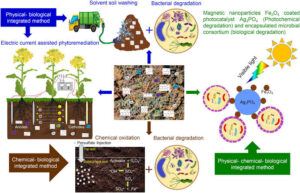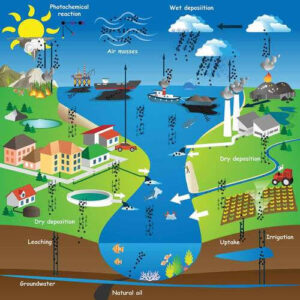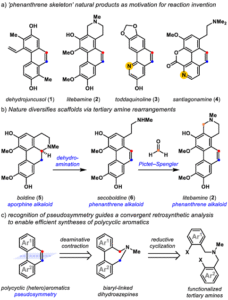Back to: Organic Chemistry 300 Level
Welcome to class!
Hello, my brilliant learner! It’s always exciting to see your curiosity growing with every topic. Today, we are looking at Polynuclear Aromatics in Nature. You may be surprised to know that these compounds are not just laboratory curiosities or industrial chemicals; many occur naturally and play vital roles in living organisms and the environment. By the end of this lesson, you’ll see how nature uses these fascinating structures to build life, store energy, and sometimes, cause trouble.
Polynuclear Aromatics In Nature
Understanding Polynuclear Aromatics in Nature
Polynuclear aromatic compounds are organic molecules with two or more fused aromatic rings. While we often associate them with fuels, combustion, or pollution, they are also found in natural systems — from plant pigments to the molecules that carry our genetic code.

Natural Occurrence
In plants, certain pigments such as anthocyanins and flavonoids contain multiple aromatic rings. These are responsible for the bright colours of flowers, fruits, and leaves, attracting pollinators and protecting plants from ultraviolet radiation. In microorganisms, polynuclear aromatic structures are part of antibiotics such as tetracyclines, which have complex fused-ring systems. In the animal kingdom, steroid hormones such as oestrogen and testosterone contain fused ring systems, though these are partly saturated.
Biological Macromolecules with Polynuclear Aromatics
Nature makes use of aromatic fused rings in essential biomolecules. For example, DNA and RNA bases — purines (adenine and guanine) — have fused heteroaromatic rings, making them stable for storing genetic information. In photosynthesis, chlorophyll contains a large aromatic macrocycle that helps plants capture sunlight. In respiration, haem — the iron-containing part of haemoglobin — contains a fused aromatic porphyrin ring that carries oxygen in the blood.

Environmental Sources in Nature
Not all natural sources are beneficial. Volcanic eruptions, forest fires, and even the charring of food during cooking produce polycyclic aromatic hydrocarbons (PAHs). While some are harmless at low levels, certain PAHs like benzo[a]pyrene are harmful, leading to health risks when inhaled or ingested in high amounts.

Importance
Polynuclear aromatics in nature are double-edged swords — they can be essential to life, as in pigments and genetic material, or dangerous, as in certain combustion products. Understanding them helps scientists develop medicines, improve agricultural productivity, and reduce environmental harm.
Summary
- Polynuclear aromatics are compounds with two or more fused aromatic rings.
- They occur naturally in plant pigments, antibiotics, steroid hormones, and biological macromolecules.
- DNA and RNA bases, chlorophyll, and haem all contain fused aromatic structures.
- Natural environmental sources include volcanic eruptions, forest fires, and charred food.
- They can be beneficial or harmful, depending on their structure and exposure level.
Evaluation
- Define polynuclear aromatics and mention two examples from living organisms.
- Give two natural environmental sources of polycyclic aromatic hydrocarbons.
- Explain the role of aromatic fused rings in DNA and RNA.
- Why are some natural polynuclear aromatics considered harmful?
- Mention two plant-based compounds that contain polynuclear aromatic structures.
You are doing wonderfully well! Every new concept you master brings you closer to becoming a confident, world-class chemist who understands the science of life itself. Afrilearn is proud to walk this path with you, and your dedication today is the foundation of the breakthroughs you’ll create tomorrow.
